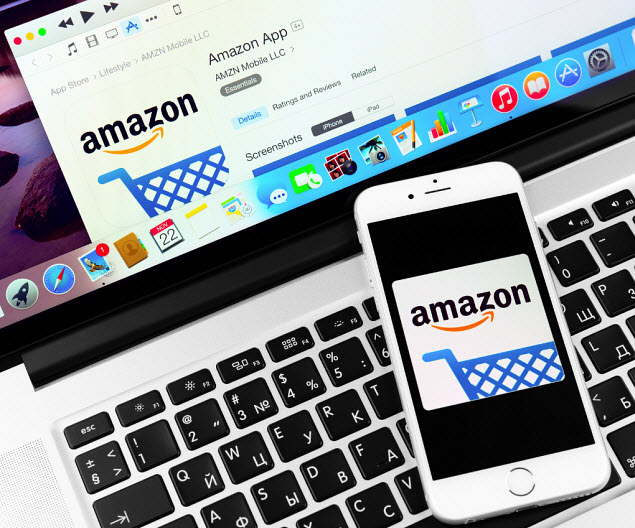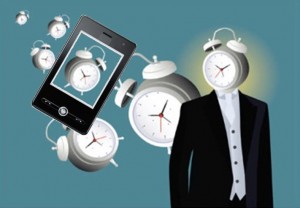This online marketplace appears to be the top starting point for people looking for products.
When it comes to the search for information, Google still reigns supreme, but when consumers have a product in mind, the mobile shopping trends now show that Amazon is the place where they are most likely to start.
A recent study has shown that 45 percent of mobile shoppers look to Amazon first when seeking a product.
While 63 percent of mobile consumers will still use Google when they are trying to find information about a topic or a product, when the time comes that they actually want to make a purchase, their attention is turned to Amazon for that first query, 45 percent of the time. The mobile shopping trends study was conducted in the form of an analysis of tracking data with regards to the decision process of a panel made up of 2,000 mobile shoppers, online. The study was conducted by both Pymnts and Amazon, which are both companies involved in mobile payments.
They discovered some very insightful mobile shopping trends, regarding searching behaviors.
 What they discovered was that when consumers want to buy something online 64 percent will begin by conducting a search at an online marketplace, while another 48 percent will begin their effort at a specific favorite merchant. Only 40 percent started a shopping experience by using a search engine.
What they discovered was that when consumers want to buy something online 64 percent will begin by conducting a search at an online marketplace, while another 48 percent will begin their effort at a specific favorite merchant. Only 40 percent started a shopping experience by using a search engine.
In terms of mobile commerce, this searching trend does make a great deal of sense, as these devices are not used in the same way as laptops and desktops. Someone who is trying to find a product while using a smartphone is much more likely to be conducting a search for something specific, and may be looking for the item based on their current location, as opposed to absolutely everything that is available online.
While many laptop and desktop users conduct searches with the intention to buy online, mobile shopping trends show that many of their product queries are for products that they want to better understand but then purchase in a brick and mortar shop. They will often try to ensure that the retailer does sell the product, that it is in stock, and that they have the best price that can be found locally.
These technologies can help to shorten lines, which could be promising for many industries.
Typically speaking, people hate waiting in line, and the fact that new data is indicating that mobile payments could help to cut wait times in a meaningful way is starting to boost its appeal to retailers, quick service restaurants, events, and other industries.
Any brand that has a business model based on rapid service will find faster transactions attractive.
In Chicago at the recent Interactive Customer Experience Summit from Networld Media Group, a number of important brands – including MoneyGram International, Dunkin’ Donuts and Taco Bell – came together to discuss the issue of wait times and the ways in which they could improve the customer experience. In their discussions, one of the most common denominators was that mobile payments and m-commerce helped to reduce the amount of time that a customer was required to wait in order to complete their full interaction with the brand for that session.
Taco Bell found that their mobile payments app helped to improve the customer experience in a range of ways.
 At that fast food company, approximately 75 percent of all of the orders that are taken within their locations are customized. This, according to the Taco Bell Corp associate manager for operations, Veronica Luna. However, when the mobile app was introduced by the brand, what the company discovered was that customers had a tendency to add to their items instead of taking things away. Moreover, the average check amounts are higher among orders made by way of the app.
At that fast food company, approximately 75 percent of all of the orders that are taken within their locations are customized. This, according to the Taco Bell Corp associate manager for operations, Veronica Luna. However, when the mobile app was introduced by the brand, what the company discovered was that customers had a tendency to add to their items instead of taking things away. Moreover, the average check amounts are higher among orders made by way of the app.
Furthermore, the company made it possible for customers to speed up their own experiences within the store. The customers who used the mobile app to place their orders were able to use that same app to check in as soon as they arrived at the location. This signaled to employees that the individual had arrived, so that they could begin filling that order and serve them as soon as possible. This reduced the amount of waiting for food prep and meant that the customer never needed to wait in line to actually place the order.
Moreover, with mobile payments, it meant that the customer simply needed to receive the order and leave, instead of needing to wait at a till to complete the transaction. This type of opportunity is starting to be seen to an increasing degree by different companies that are able to reduce the amount of time that customers have to wait while in the physical store locations.
 What they discovered was that when consumers want to buy something online 64 percent will begin by conducting a search at an online marketplace, while another 48 percent will begin their effort at a specific favorite merchant. Only 40 percent started a shopping experience by using a search engine.
What they discovered was that when consumers want to buy something online 64 percent will begin by conducting a search at an online marketplace, while another 48 percent will begin their effort at a specific favorite merchant. Only 40 percent started a shopping experience by using a search engine.
 At that fast food company, approximately 75 percent of all of the orders that are taken within their locations are customized. This, according to the Taco Bell Corp associate manager for operations, Veronica Luna. However, when the
At that fast food company, approximately 75 percent of all of the orders that are taken within their locations are customized. This, according to the Taco Bell Corp associate manager for operations, Veronica Luna. However, when the 